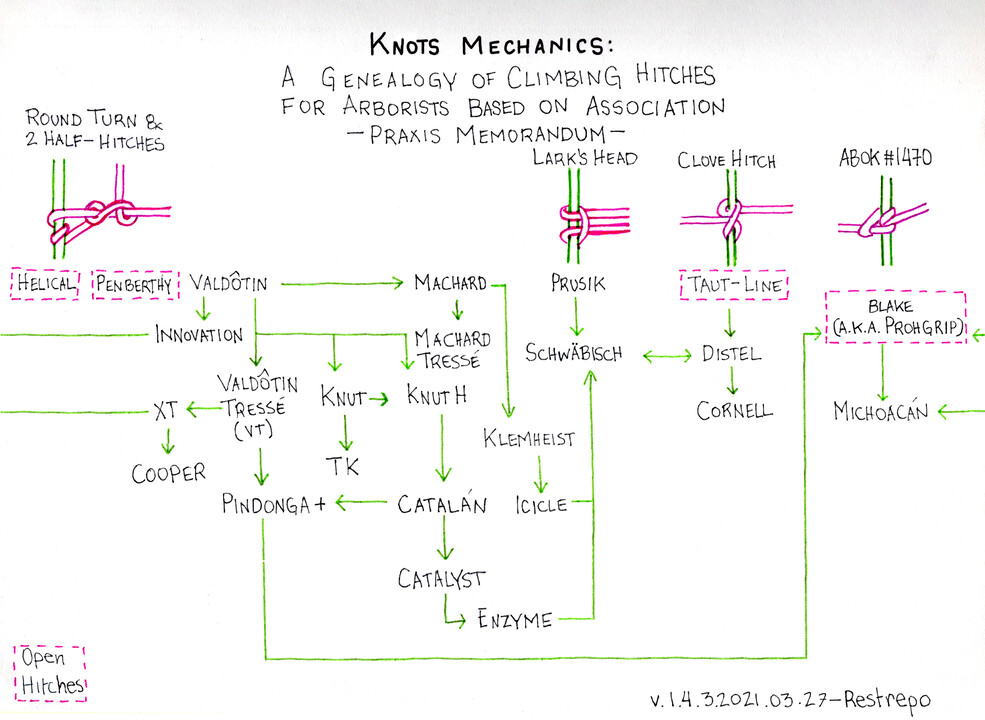Knotorious
That Guy With The Face
Here is an amazing article which can help anyone understand how each friction hitch developed into another. You might recognize most of the drawings as having been done by @Brocky and it is written by David Restrepo. It is an excellent resource.

 www.linkedin.com
www.linkedin.com
Knots Mechanics: A Genealogy of Climbing Hitches for Arborists Based on Association

Knots Mechanics: A Genealogy of Climbing Hitches for Arborists Based on Association
The present article is an ongoing essay subjected to general public review, aiming to present the current arsenal of arborists' climbing hitches by association, serving as a praxis memorandum-vade mecum. It specifies the similarities and subtle changes between various hitches, highlighting simple re
 www.linkedin.com
www.linkedin.com
